Abstract
Two experiments investigated the effects of a treatment package on the self-injurious behavior of three profoundly retarded persons who appeared to enjoy the physical restraints used to prevent their self-injury. The treatment package included physically restraining subjects contingent on increasing periods of time during which no self-injury occurred, and providing them with toys and attention during intervals between restraints. A reversal and multiple-baseline analysis documented that the rapid and complete reduction in self-injury by all subjects was due to this treatment package. Because these results suggested that physical restraint might function as a positive reinforcer, in a third experiment physical restraint was applied contingent on a marble placement response with one subject. A reversal design demonstrated that toy play systematically increased when each response resulted in restraint. The experiments have implications for the nonaversive remediation of self-injury in individuals who are restrained, as well as for the development and maintenance of self-injury in natural settings.
Full text
PDF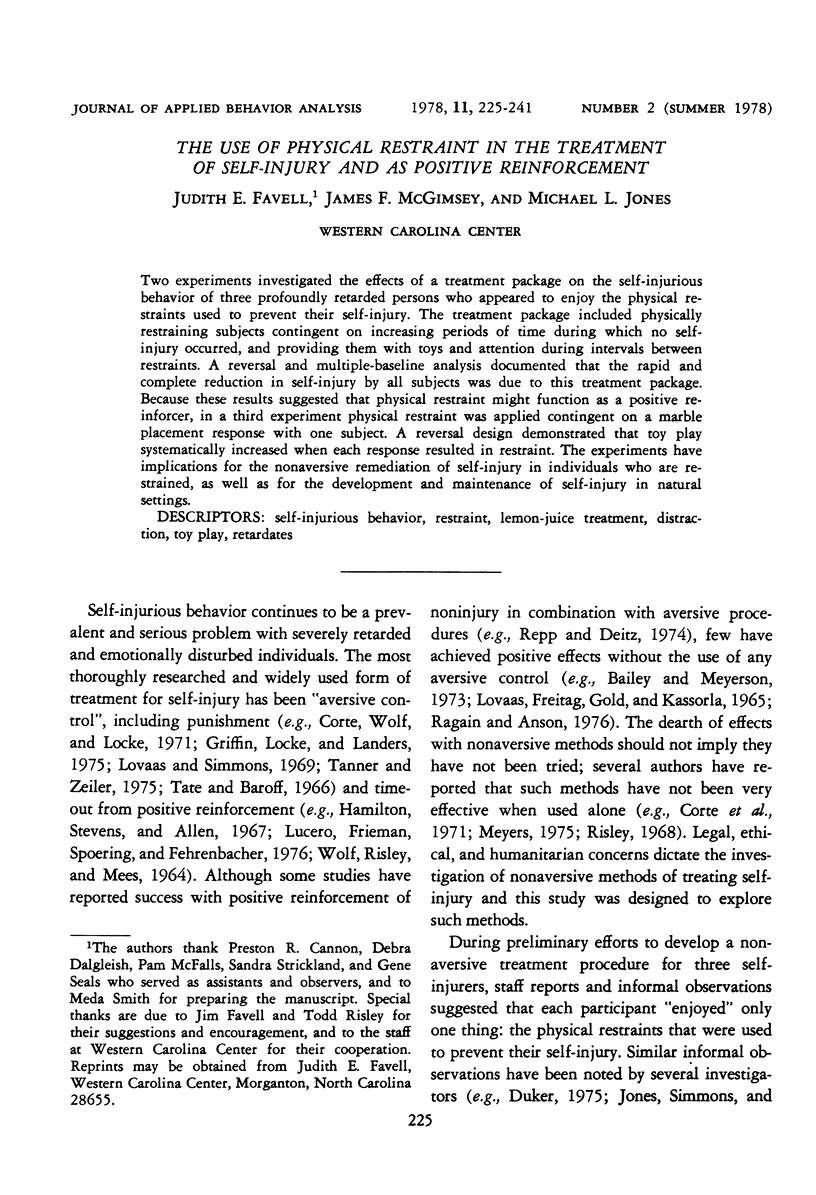
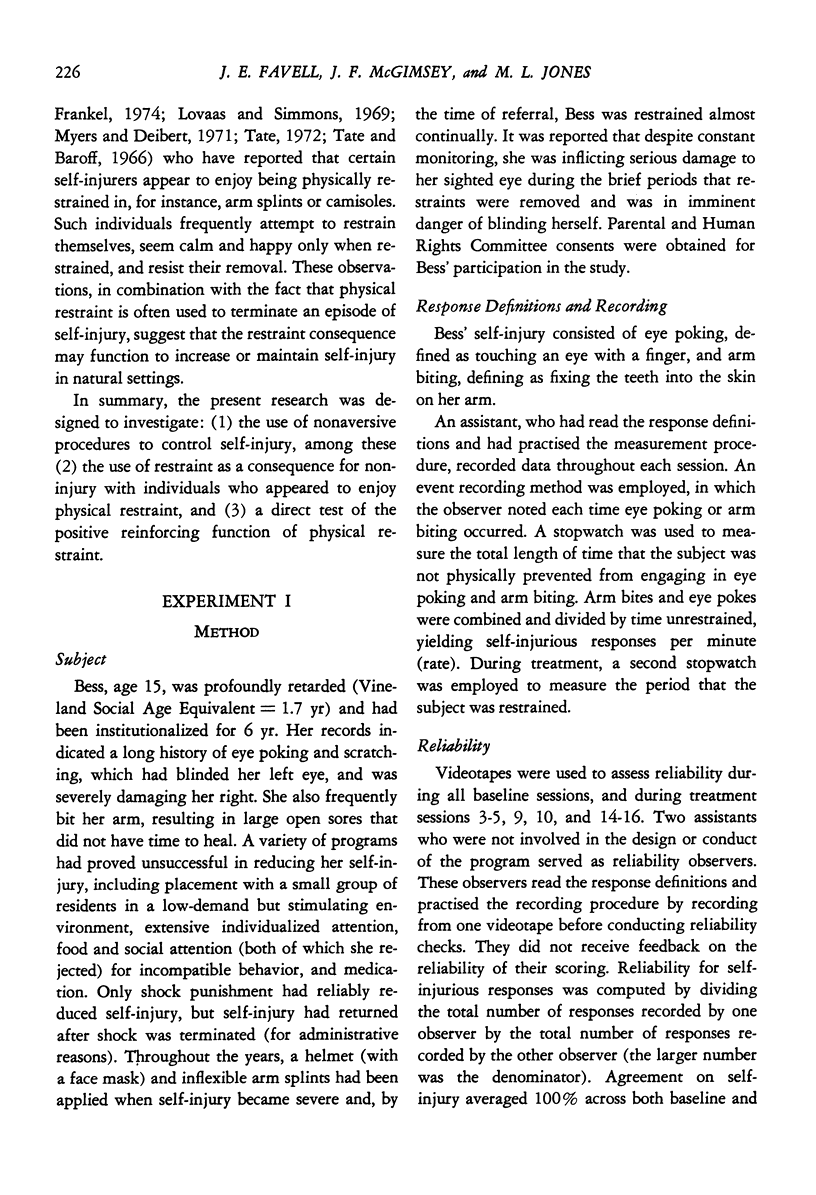
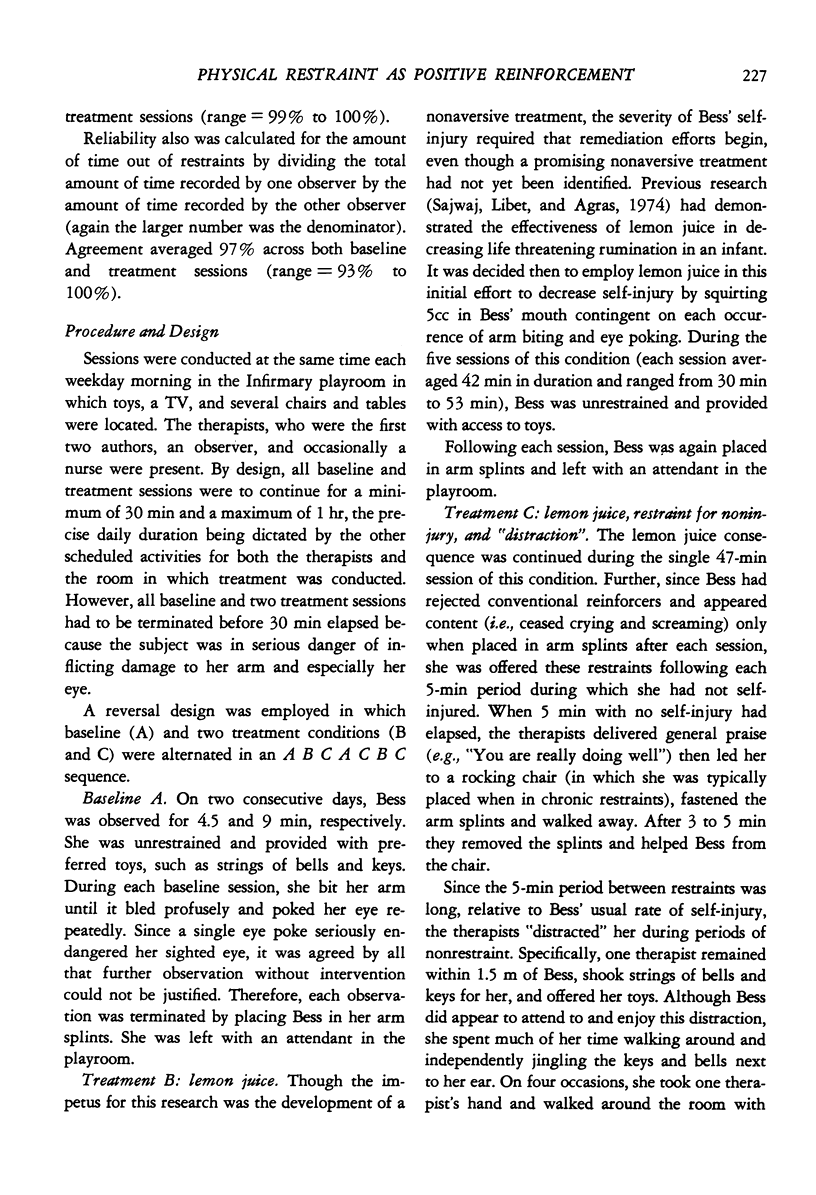
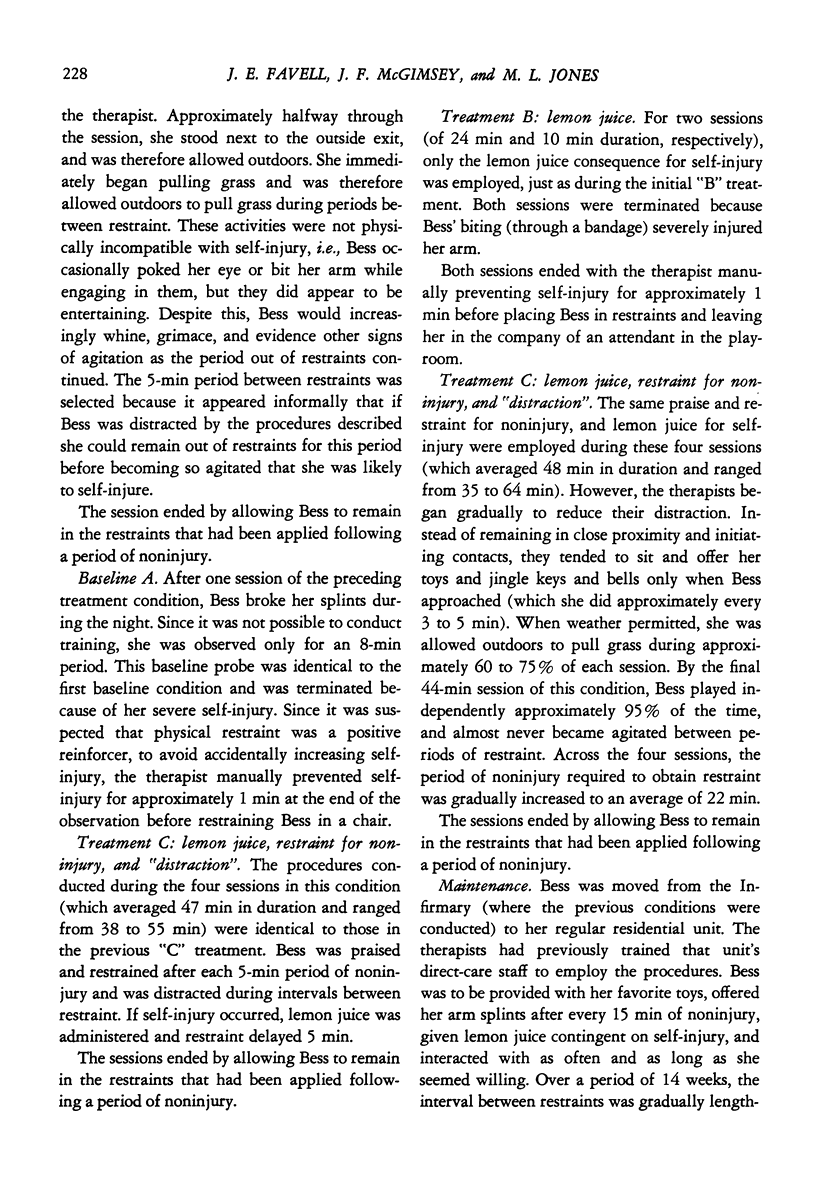
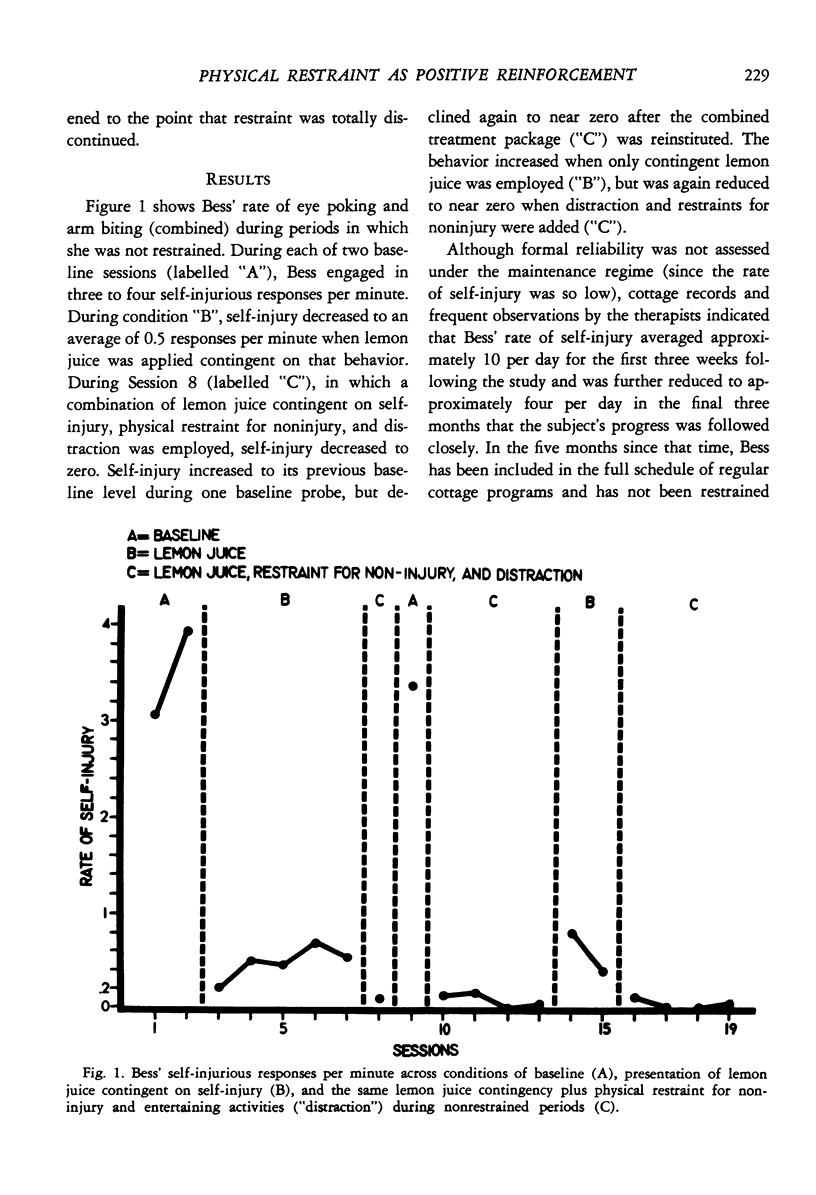
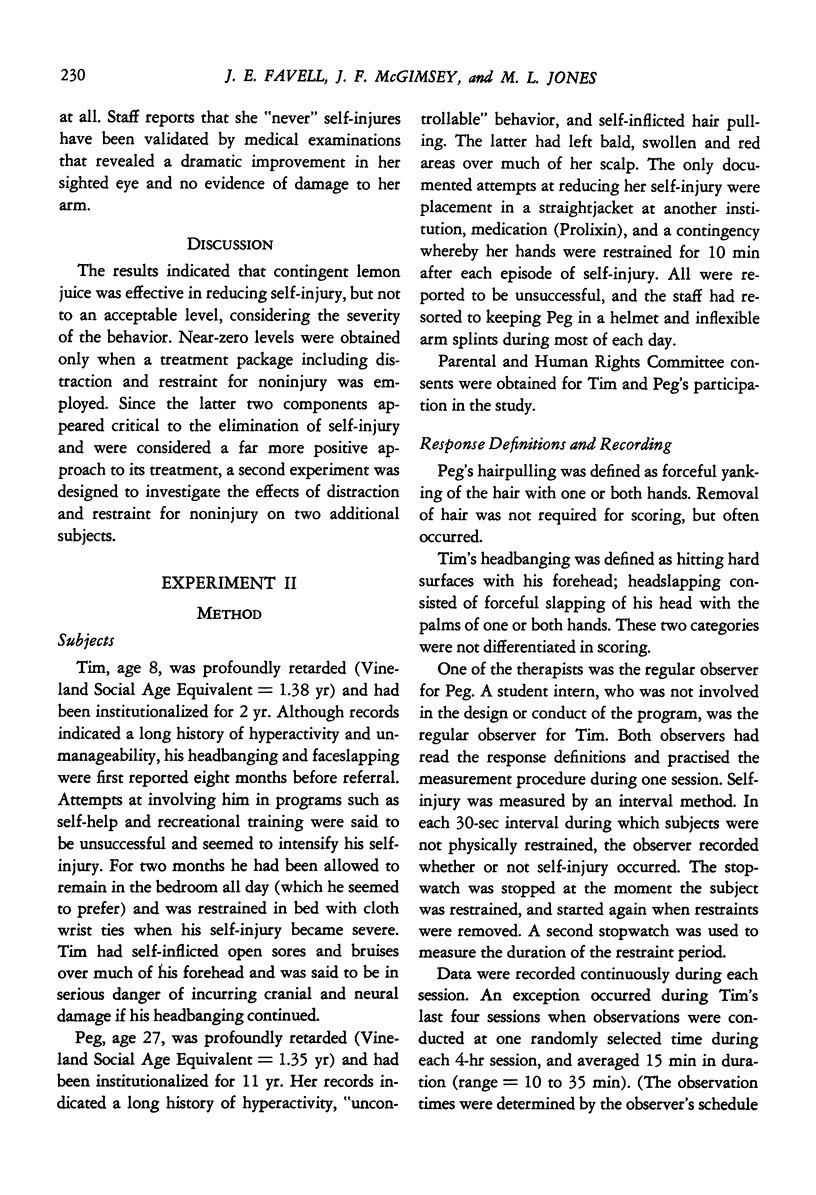
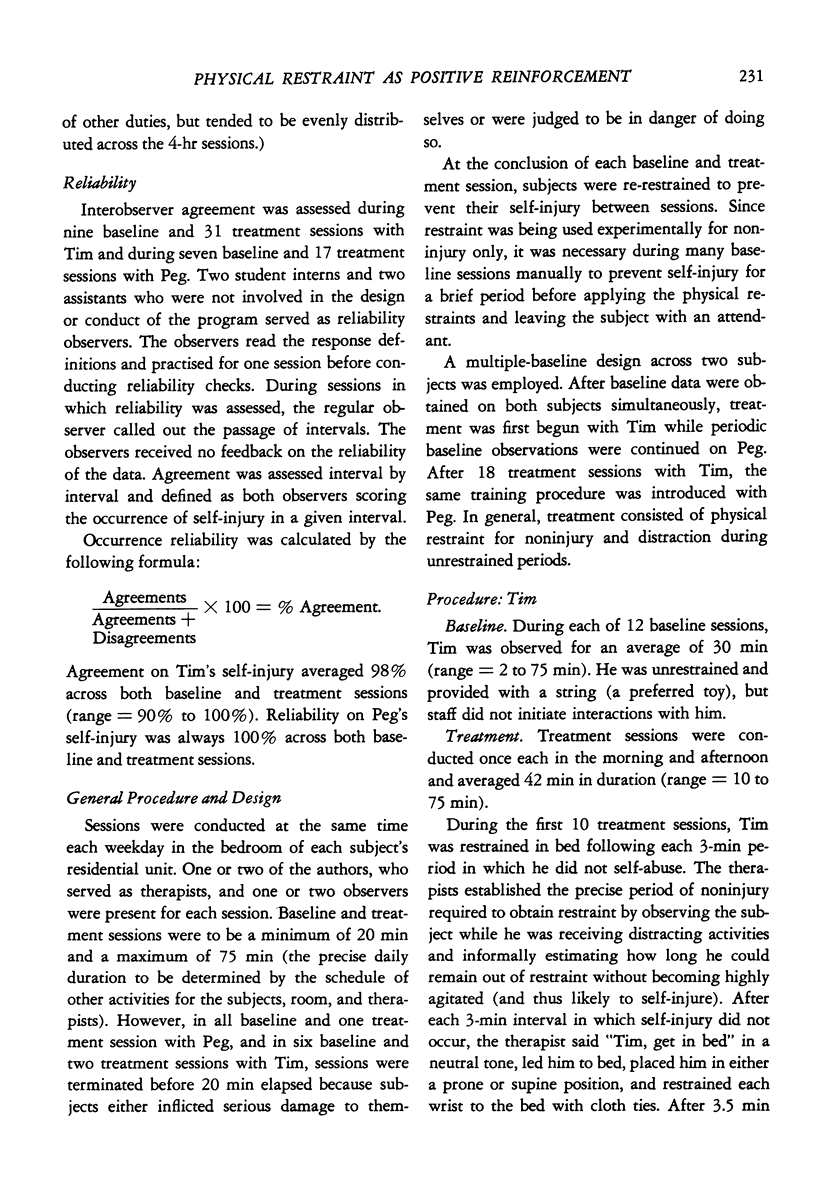
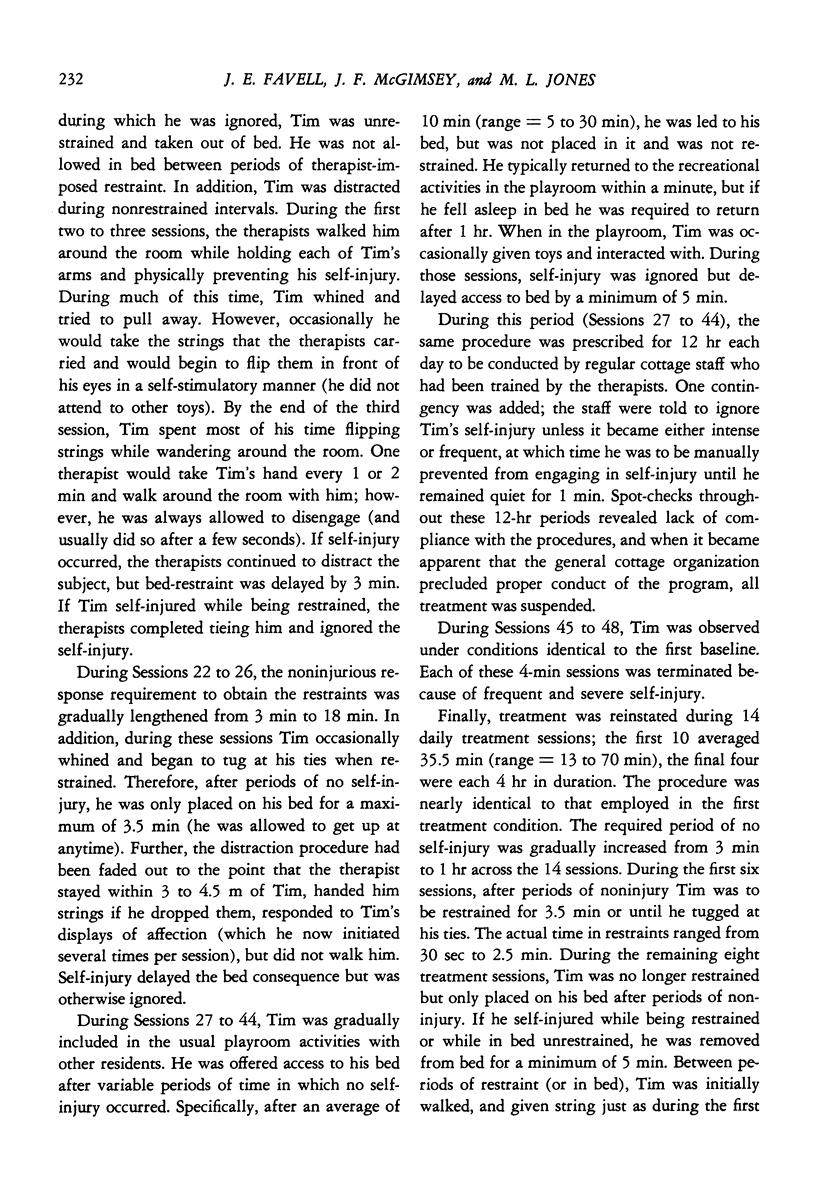
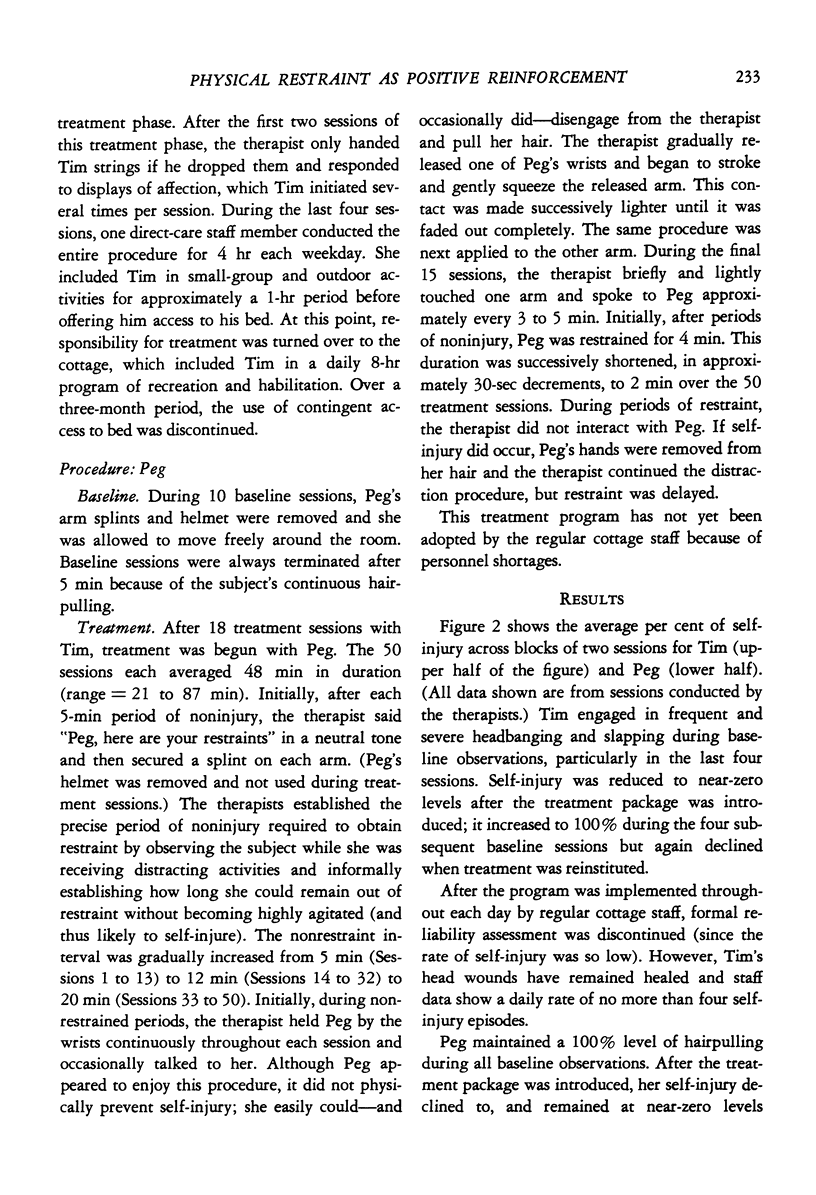
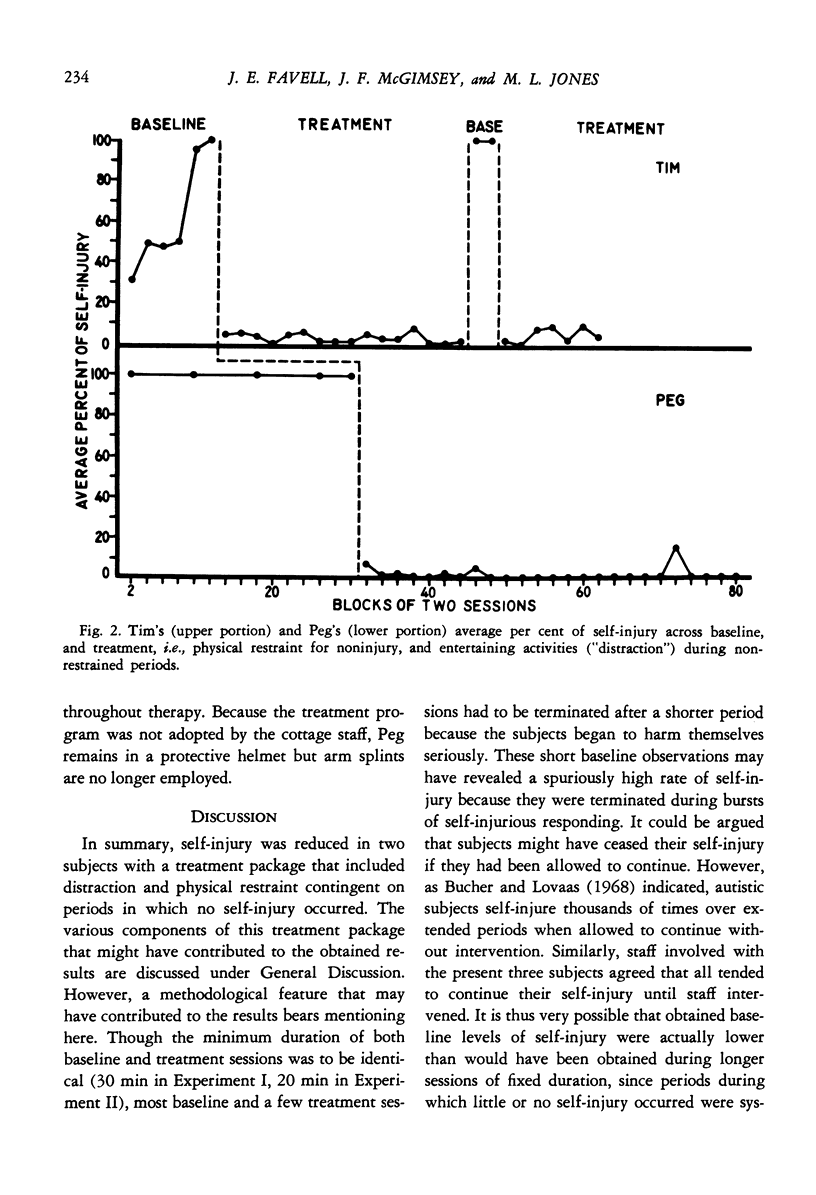
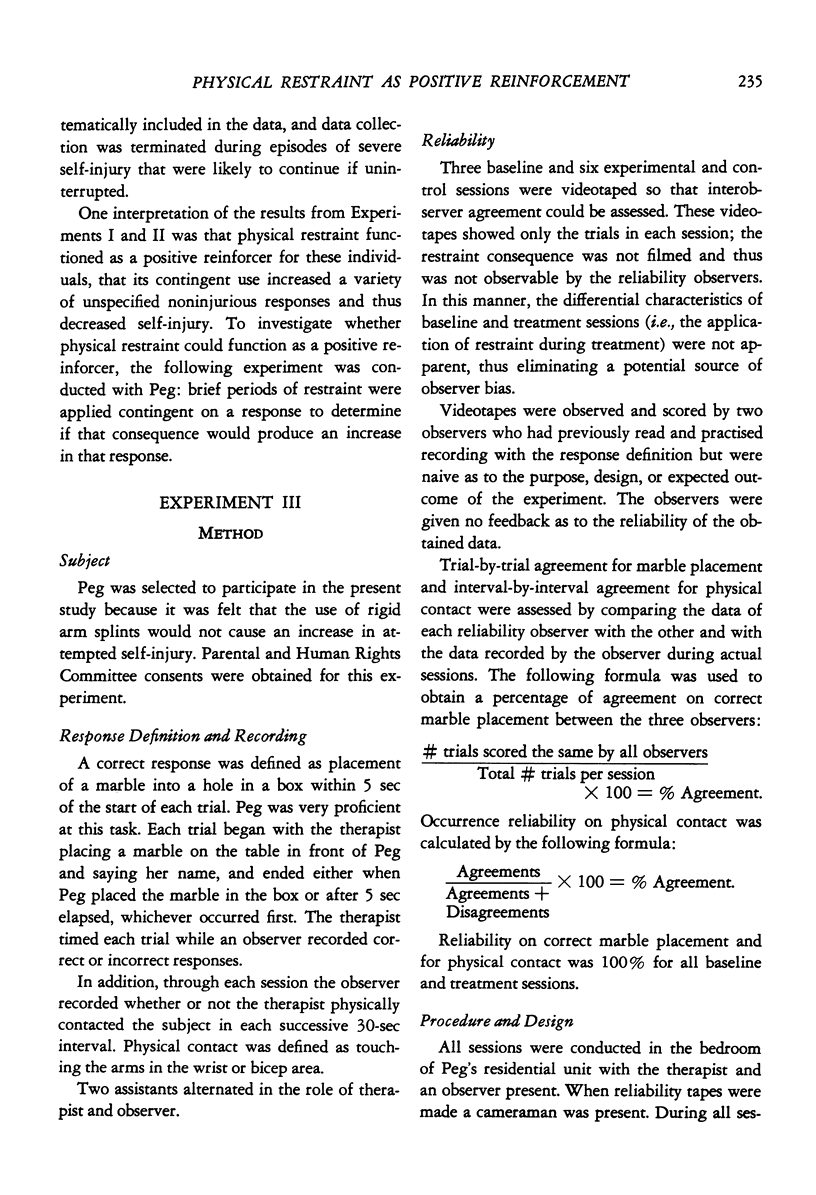
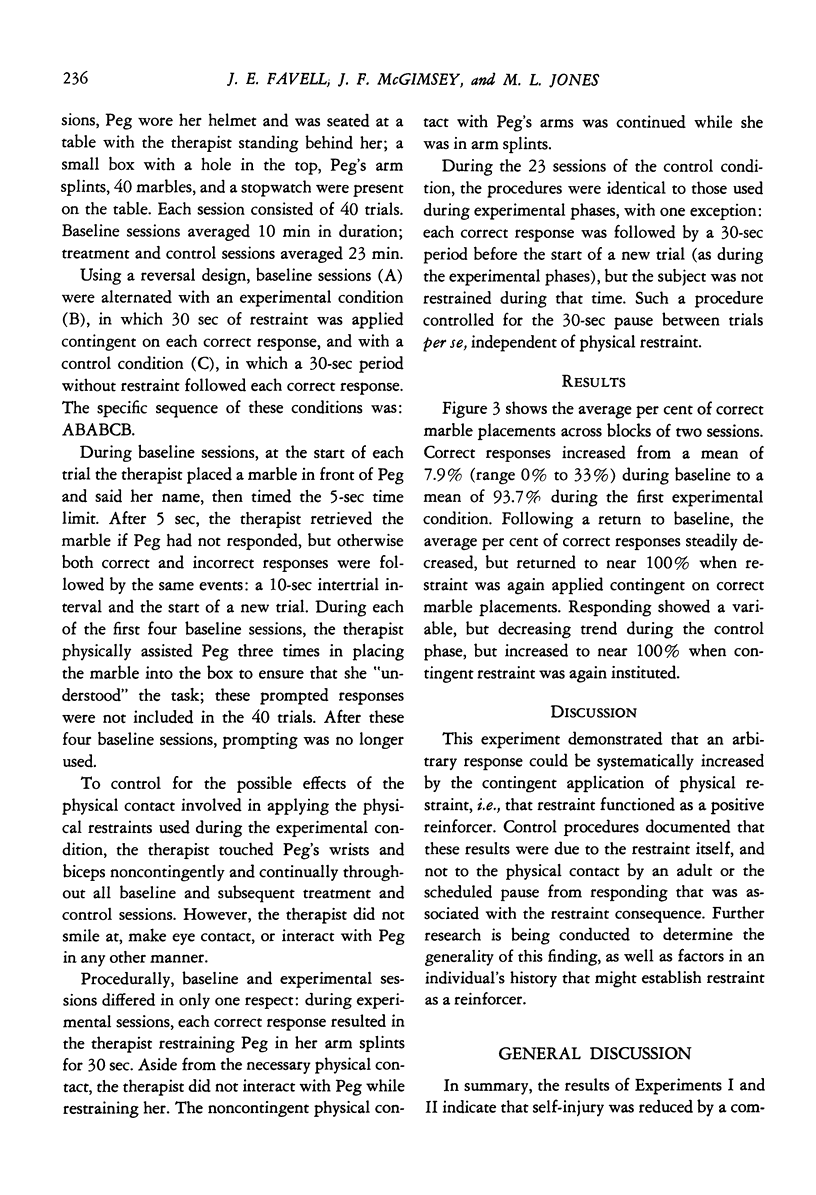
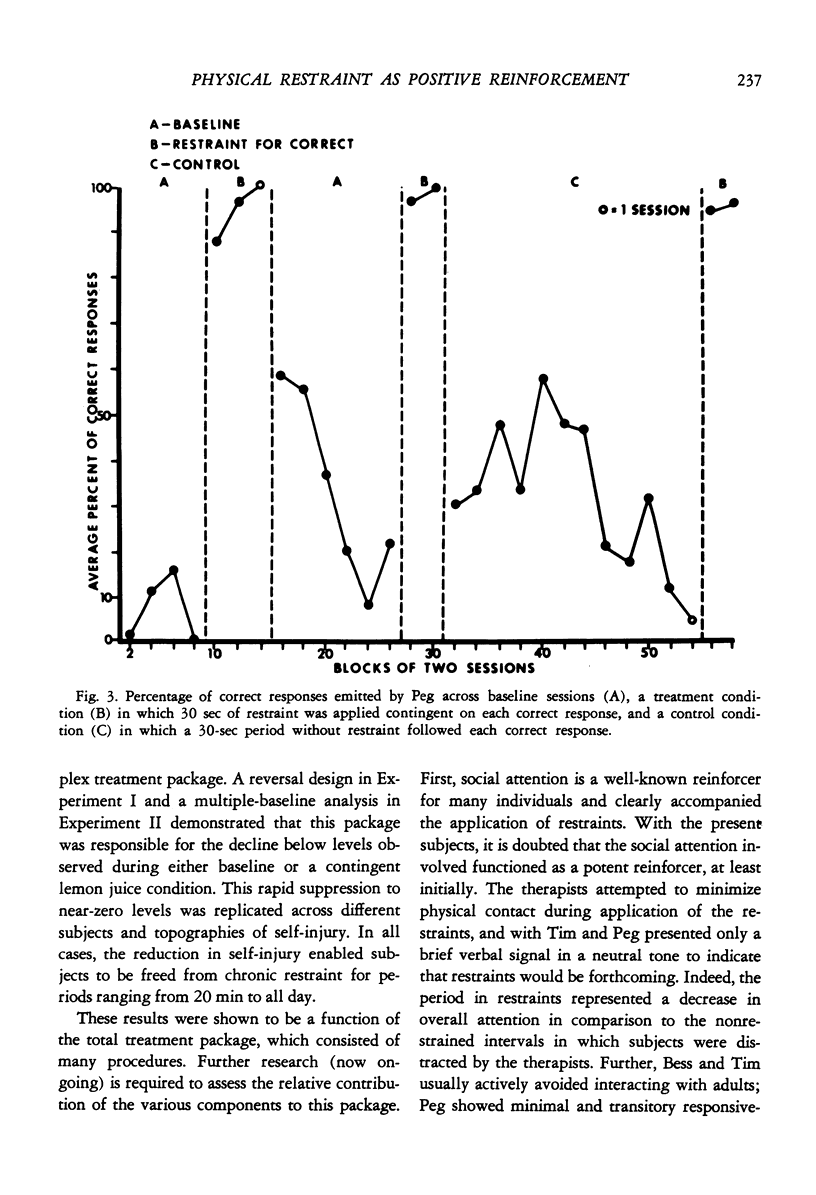

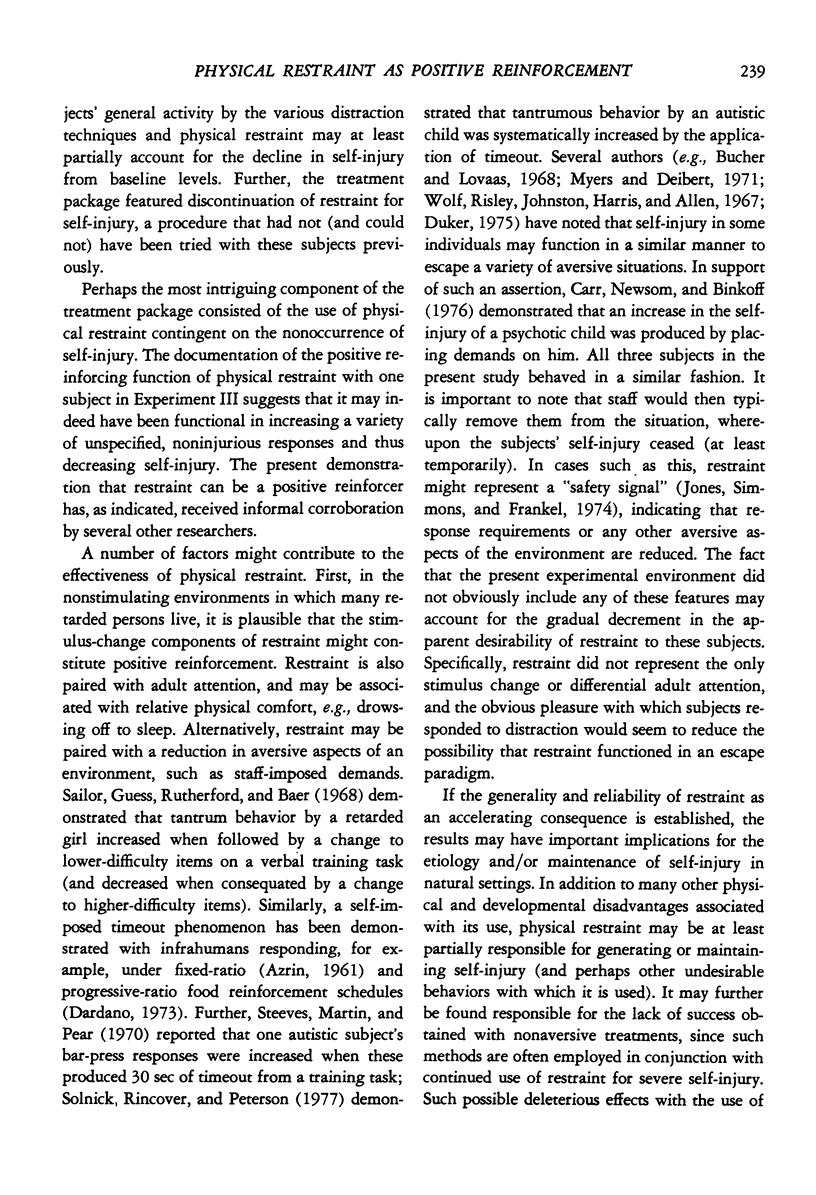
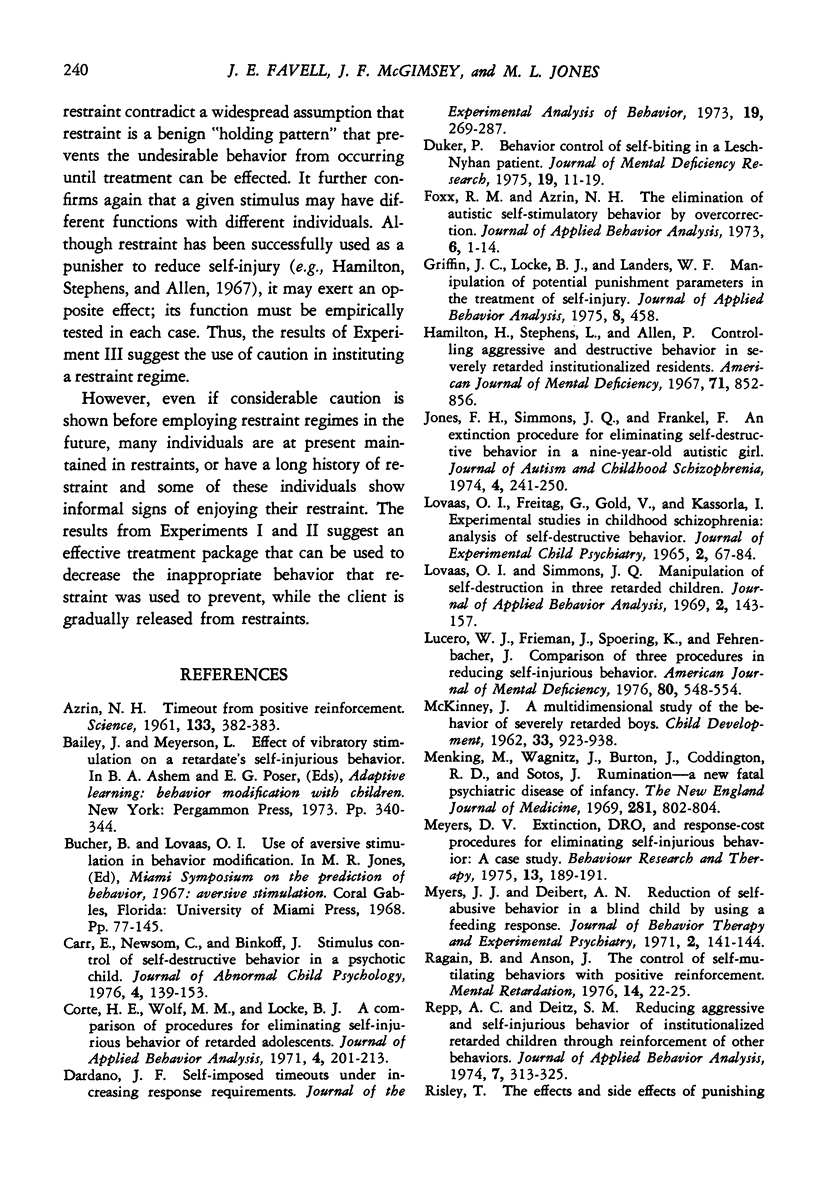

Selected References
These references are in PubMed. This may not be the complete list of references from this article.
- AZRIN N. H. Time-out from positive reinforcement. Science. 1961 Feb 10;133(3450):382–383. doi: 10.1126/science.133.3450.382. [DOI] [PubMed] [Google Scholar]
- Carr E. G., Newsom C. D., Binkoff J. A. Stimulus control of self-destructive behavior in a psychotic child. J Abnorm Child Psychol. 1976;4(2):139–153. doi: 10.1007/BF00916518. [DOI] [PubMed] [Google Scholar]
- Corte H. E., Wolf M. M., Locke B. J. A comparison of procedures for eliminating self-injurious behavior of retarded adolescents. J Appl Behav Anal. 1971 Fall;4(3):201–213. doi: 10.1901/jaba.1971.4-201. [DOI] [PMC free article] [PubMed] [Google Scholar]
- Dardano J. F. Self-imposed timeouts under increasing response requirements. J Exp Anal Behav. 1973 Mar;19(2):269–287. doi: 10.1901/jeab.1973.19-269. [DOI] [PMC free article] [PubMed] [Google Scholar]
- Duker P. Behaviour control of self-biting in a Lesch-Nyhan patient. J Ment Defic Res. 1975 Mar;19(1):11–19. doi: 10.1111/j.1365-2788.1975.tb01252.x. [DOI] [PubMed] [Google Scholar]
- Foxx R. M., Azrin N. H. The elimination of autistic self-stimulatory behavior by overcorrection. J Appl Behav Anal. 1973 Spring;6(1):1–14. doi: 10.1901/jaba.1973.6-1. [DOI] [PMC free article] [PubMed] [Google Scholar]
- Griffin J. C., Locke B. J., Landers W. F. Manipulation of potential punishment parameters in the treatment of self-injury. J Appl Behav Anal. 1975 Winter;8(4):458–458. doi: 10.1901/jaba.1975.8-458. [DOI] [PMC free article] [PubMed] [Google Scholar]
- Jones F. H. An extinction procedure for eliminating self-destructive behavior in a 9-year-old autistic girl. J Autism Child Schizophr. 1974 Sep;4(3):241–250. doi: 10.1007/BF02115230. [DOI] [PubMed] [Google Scholar]
- Lovaas O. I., Simmons J. Q. Manipulation of self-destruction in three retarded children. J Appl Behav Anal. 1969 Fall;2(3):143–157. doi: 10.1901/jaba.1969.2-143. [DOI] [PMC free article] [PubMed] [Google Scholar]
- Lucero W. J., Frieman J., Spoering K., Fehrenbacher J. Comparison of three procedures in reducing self-injurious behavior. Am J Ment Defic. 1976 Mar;80(5):548–554. [PubMed] [Google Scholar]
- MCKINNEY J. P. A multidimensional study of the behavior of severely retarded boys. Child Dev. 1962 Dec;33:923–938. doi: 10.1111/j.1467-8624.1962.tb05128.x. [DOI] [PubMed] [Google Scholar]
- Menking M., Wagnitz J. G., Burton J. J., Coddington R. D., Sotos J. F. Rumination--a near fatal psychiatric disease of infancy. N Engl J Med. 1969 Apr 10;280(15):802–804. doi: 10.1056/NEJM196904102801503. [DOI] [PubMed] [Google Scholar]
- Myers D. V. Extinction, DRO, and response-cost procedures for eliminating self-injurious behavior: a case study. Behav Res Ther. 1975 Jun;13(2-3):189–191. doi: 10.1016/0005-7967(75)90016-9. [DOI] [PubMed] [Google Scholar]
- Ragain R. D., Anson J. E. The control of self-mutilating behavior with positive reinforcement. Ment Retard. 1976 Jun;14(3):22–25. [PubMed] [Google Scholar]
- Repp A. C., Deitz S. M. Reducing aggressive and self-injurious behavior of institutionalized retarded children through reinforcement of other behaviors. J Appl Behav Anal. 1974 Summer;7(2):313–325. doi: 10.1901/jaba.1974.7-313. [DOI] [PMC free article] [PubMed] [Google Scholar]
- Risley T. R. The effects and side effects of punishing the autistic behaviors of a deviant child. J Appl Behav Anal. 1968 Spring;1(1):21–34. doi: 10.1901/jaba.1968.1-21. [DOI] [PMC free article] [PubMed] [Google Scholar]
- Sailor W., Guess D., Rutherford G., Baer D. M. Control of tantrum behavior by operant techniques during experimental verbal training. J Appl Behav Anal. 1968 Fall;1(3):237–243. doi: 10.1901/jaba.1968.1-237. [DOI] [PMC free article] [PubMed] [Google Scholar]
- Sajwaj T., Libet J., Agras S. Lemon-juice therapy: the control of life-threatening rumination in a six-month-old infant. J Appl Behav Anal. 1974 Winter;7(4):557–563. doi: 10.1901/jaba.1974.7-557. [DOI] [PMC free article] [PubMed] [Google Scholar]
- Solnick J. V., Rincover A., Peterson C. R. Some determinants of the reinforcing and punishing effects of timeout. J Appl Behav Anal. 1977 Fall;10(3):415–424. doi: 10.1901/jaba.1977.10-415. [DOI] [PMC free article] [PubMed] [Google Scholar]
- Tanner B. A., Zeiler M. Punishment of self-injurious behavior using aromatic ammonia as the aversive stimulus. J Appl Behav Anal. 1975 Spring;8(1):53–57. doi: 10.1901/jaba.1975.8-53. [DOI] [PMC free article] [PubMed] [Google Scholar]
- Tate B. G., Baroff G. S. Aversive control of self-injurious behavior in a psychotic boy. Behav Res Ther. 1966 Nov;4(4):281–287. doi: 10.1016/0005-7967(66)90024-6. [DOI] [PubMed] [Google Scholar]
- Vukelich R., Hake D. F. Reduction of dangerously aggressive behavior in a severely retarded resident through a combination of positive reinforcement procedures. J Appl Behav Anal. 1971 Fall;4(3):215–225. doi: 10.1901/jaba.1971.4-215. [DOI] [PMC free article] [PubMed] [Google Scholar]
- Wolf M., Risley T., Johnston M., Harris F., Allen E. Application of operant conditioning procedures to the behavior problems of an autistic child: a follow-up and extension. Behav Res Ther. 1967 May;5(2):103–111. doi: 10.1016/0005-7967(67)90004-6. [DOI] [PubMed] [Google Scholar]


